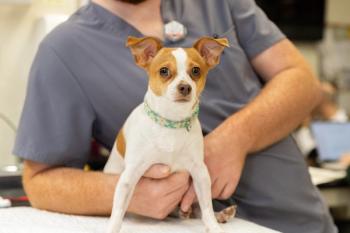
An overview of what is needed for dental nerve blocks

Fetch faculty member, Curt Coffman, DVM, FAVD, DAVDC, explains the basics of dental nerve blocks and providing local and regional anesthesia
In an interview with dvm360, Curt Coffman, DVM, FAVD, DAVDC, specialty director of dentistry at Thrive Pet Healthcare, explained what materials are needed for a dental nerve block including syringes and anesthesia. He also shared what he hopes attendees take away from his upcoming dentistry sessions at the Fetch conference in Long Beach, California.
Coffman will be delivering dentistry lectures at our Fetch Long Beach conference taking place December 1-3, 2023.
The following is a partial transcript of the video.
Curt Coffman, DVM, FAVD, DAVDC: Almost every hospital has a 3cc syringe or a 1cc syringe and a 25 to 27 gauge needle. And depending on the size of the patient, you may go from a half inch to 1 and a half inch, small gauge needle. And so those are kind of the hardware.
The nerve block agent that's most typically used is bupivacaine. Also some people use lidocaine or some other local anesthetic agents, and most hospitals again have that on hand, so it's inexpensive.
There's all levels of people that will come to a dentistry session, but the thing that I hope that they all go home with, is that they're like, 'You know what, I learned something that I'm going to use and it's going to make my day better.'
Newsletter
From exam room tips to practice management insights, get trusted veterinary news delivered straight to your inbox—subscribe to dvm360.





